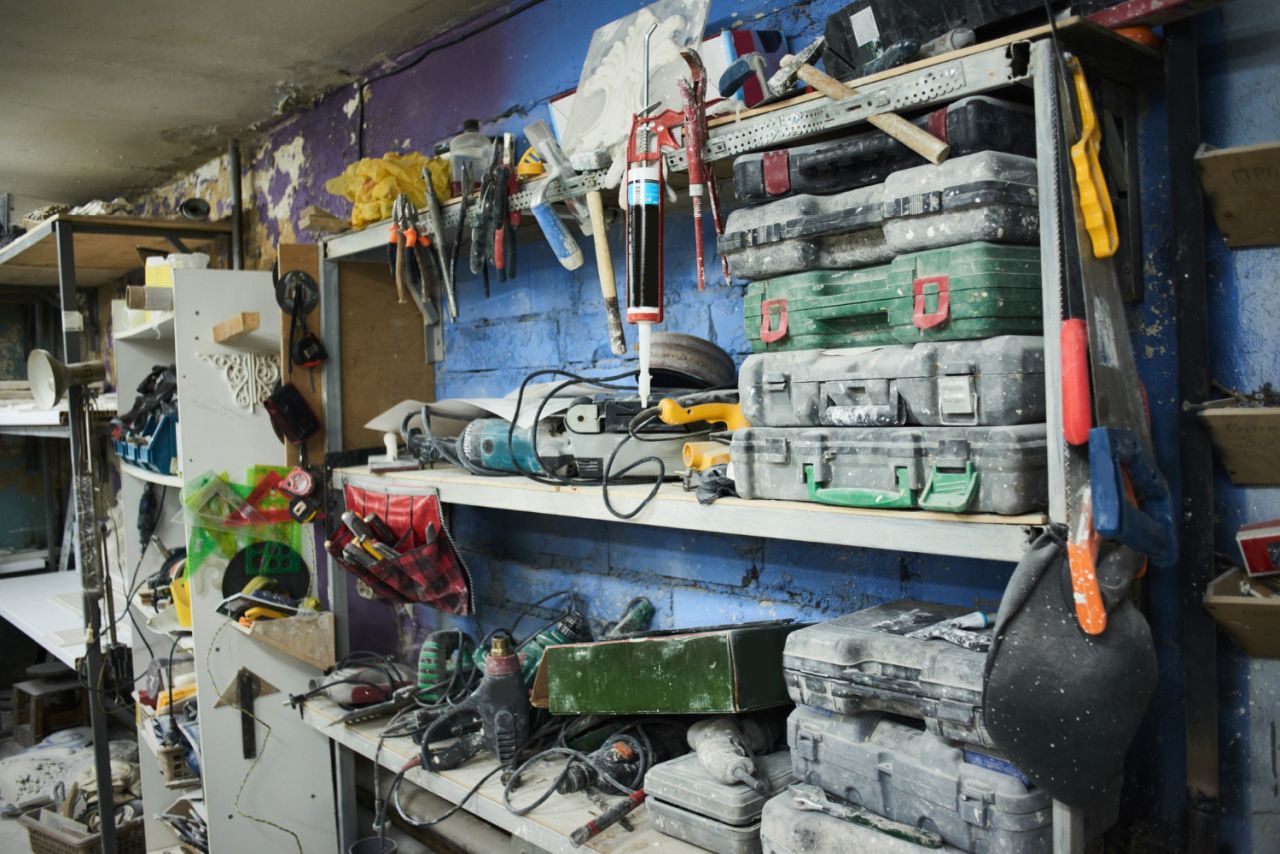Electronic devices' long-term storage requires careful planning and the right environment to protect valuable and sensitive components from damage.
With a few best practices, electronics can remain in optimal condition for extended periods, ensuring that devices, from digital cameras to larger electronic systems, are preserved safely and securely.
Here’s a comprehensive guide to help you effectively prepare, pack, store, and maintain electronic devices.
Let's get straight to the point
To safely store electronics in the long term, prepare devices by cleaning them to remove dust and contaminants and choosing climate-controlled storage units that stabilise temperature and humidity.
Protect components from static electricity with anti-static bags and remove batteries to prevent leakage and corrosion.
Use original packaging for optimal protection or bubble wrap and sturdy containers. Organise cables and accessories to avoid tangling and ease reconnection. Back up sensitive data on external devices for added security.
To keep electronics in good condition for future use, avoid extreme temperatures, label stored items, and follow these guidelines.
Preparing Electronic Devices for Storage
Cleaning and Maintenance
Proper cleaning and maintenance are essential in preparing electronics for long-term storage.
Compressed air can safely remove contaminants like dust and grime from internal components such as circuit boards and cooling systems.
A microfiber cloth can help wipe down surfaces and screens without scratching delicate parts.
Clean all cables and accessories to remove any potential contaminants for additional protection.
Conduct regular maintenance on electronics before storage to prevent degradation of internal hardware.
For example, ensure that battery contacts are clean and free from acid or other residues. Removing dust from cooling systems will help maintain proper airflow, critical for devices stored in environments with limited ventilation.
Protecting Electronics from Damage
Static Protection
Electronics are sensitive to static electricity, which can cause irreversible damage to internal components. To protect against static, wrap devices in anti-static bags or use an anti-static mat when handling circuit boards or internal components.
Anti-static bags provide extra protection for delicate electronics, especially when stored alongside other electronic items that could generate static electricity. Plastic or storage containers lined with anti-static material are also recommended to prevent static discharge.
Choosing the Right Storage Unit
Climate-Controlled Storage Units
Selecting a climate-controlled storage unit is one of the best practices for long-term electronics storage. Temperature fluctuations, high temperatures, and high humidity can adversely affect sensitive components and internal hardware.
climate-controlled storage facilities are designed to stabilise the temperature range and humidity levels, preventing moisture damage and minimising the risk of physical damage.
Opt for storage units that maintain low temperatures to avoid overheating delicate electronics. Storage facilities with humidity control, for example, help avoid moisture that could lead to corrosion or damage to circuit boards and sensitive items.
Long-term warehouse storage options with humidity levels between 30% and 50% provide an optimal condition for electronic devices.
Safety Precautions for Storing Electronics
Battery Removal and Safety
When storing electronics, it is crucial to remove batteries, especially lithium and alkaline batteries. Batteries can leak, causing corrosion and battery acid damage to other internal components, particularly over time.
To minimise potential risks, store batteries separately in a cool, dry place.
Avoid storing plugged accessories and battery-powered devices with the batteries intact to prevent damage from potential leaks and corrosion.
Usee archival or cloth tape to cover battery contacts and other electrical connector to enhance battery safetys. This simple step adds a layer of safety by insulating connectors and preventing unwanted short circuits.
Packing and Organising Electronic Devices
Original Packaging and Cables
Where possible, store electronics in their original packaging, which is specifically designed to provide the best fit and protection.
The original boxes often have built-in internal supports and thermoplastic polyurethane layers that shield delicate devices from physical damage.
However, if original packaging is unavailable, bubble wrap and additional cushioning can offer the required protection against impact.

Keep all cables organised with labelled storage bags or tape to prevent loss and ensure easy reconnection when retrieving the devices from storage. Consider using plastic containers to store cables and accessories separately to avoid tangling and damage.
Data Backup and Security for Electronic Devices
Protecting Sensitive Data
Data backup is essential before storing any electronic device. Store digital backups on a secure external hard drive or a portable storage device, ensuring critical data remains accessible and safe even if the original device is damaged.
Encryption is considered for added security for sensitive components that hold valuable data, such as laptops or external drives.
Data security maintenance includes periodically checking and updating backup files. When preparing a storage device, remove sensitive information to reduce risks if the device is compromised.
Benefits of Storing Electronics in a Storage Unit
Convenience and Security
Using a dedicated storage unit for electronics offers significant benefits in terms of security and convenience. Storage facilities are built with temperature and humidity controls, making them ideal for preserving electronic devices in optimal condition.
Moreover, a storage unit provides a secure location for valuable electronics, keeping them safe from potential contaminants and reducing the risk of theft.
For large electronic devices or collections of smaller, sensitive items, long-term storage units offer a stable environment to keep electronics safe, well-organised, and easily accessible when needed.
Tips for Storing Specific Electronic Devices
Store Electronics with Care
Each type of electronic device may require unique storage methods. Digital cameras and screens should be stored upright to prevent pressure on delicate screens.
Internal supports, such as foam padding, should also support large electronic devices and prevent shifting during storage.
When storing devices with removable screens or fragile components, use bubble wrap and anti-static bags to minimise potential damage from impact or static electricity. Follow storage guidelines for each device category to ensure the best possible preservation.
Common Mistakes to Avoid When Storing Electronics
Avoiding Damage and Loss
One of the most common mistakes in storing electronics is failing to protect devices from extreme temperatures and temperature fluctuations.
High temperatures can lead to internal hardware damage, while low temperatures can affect the performance of thermoplastic components.
Avoid placing electronics near heat sources, and always opt for climate-controlled storage to keep temperature fluctuations at bay.
Another area for improvement is to organise cables and accessories, which can result in lost components and tangled wires. Always label each item, store devices securely, and ensure cables are organised and stored alongside the main unit for quick access.
Conclusion
Best Practices for Storing Electronic Devices
Following best practices for the long-term storage of electronics can prevent degradation, protect sensitive components, and keep devices in optimal condition.
Cleaning and maintenance are essential first steps, followed by selecting the appropriate storage environment and securing electronics with anti-static bags and proper packaging.
Key tips include:
- Choose climate-controlled storage: Protects electronics from humidity, temperature fluctuations, and contaminants.
- Remove batteries: Prevents corrosion and damage from battery leaks.
- Use original packaging where possible: Designed to provide optimal support and protection.
- Organise cables and accessories: Keeps components together and avoids tangling.
By following these best practices, electronics can be safely stored for a long time. This allows devices to survive storage with minimal risk of damage and ensures they are ready for use when needed.
Frequently Asked Questions
What Types of Storage Units Are Best for Storing Electronics Long-Term?
Climate-controlled storage units are highly recommended for storing electronics. They help maintain stable temperatures and humidity levels, protecting sensitive internal components from moisture damage, corrosion, and temperature fluctuations.
How Should I Prepare My Electronic Devices for Long-Term Storage?
Clean devices thoroughly to remove dust and contaminants, remove batteries to prevent corrosion, and use anti-static bags to protect against static electricity. Using original packaging or bubble wrap and organising cables also helps keep devices safe during storage.
Why Is It Important to Remove Batteries Before Storing Electronics?
Batteries can leak over time, causing damage from battery acid that corrodes internal components. Removing and storing batteries separately helps avoid this risk and keeps devices safe.
Is It Necessary to Back Up Data Before Storing Electronics?
Yes, backing up data is essential to secure important information if the original device is damaged or inaccessible. Using external storage devices or encrypted backup options can add an extra layer of security.
How Can I Prevent Static Electricity Damage When Storing Electronics?
Use anti-static bags or materials to wrap sensitive components, as static electricity can damage circuit boards and delicate parts. Anti-static storage containers or mats can also reduce static buildup, especially when storing multiple devices together.





